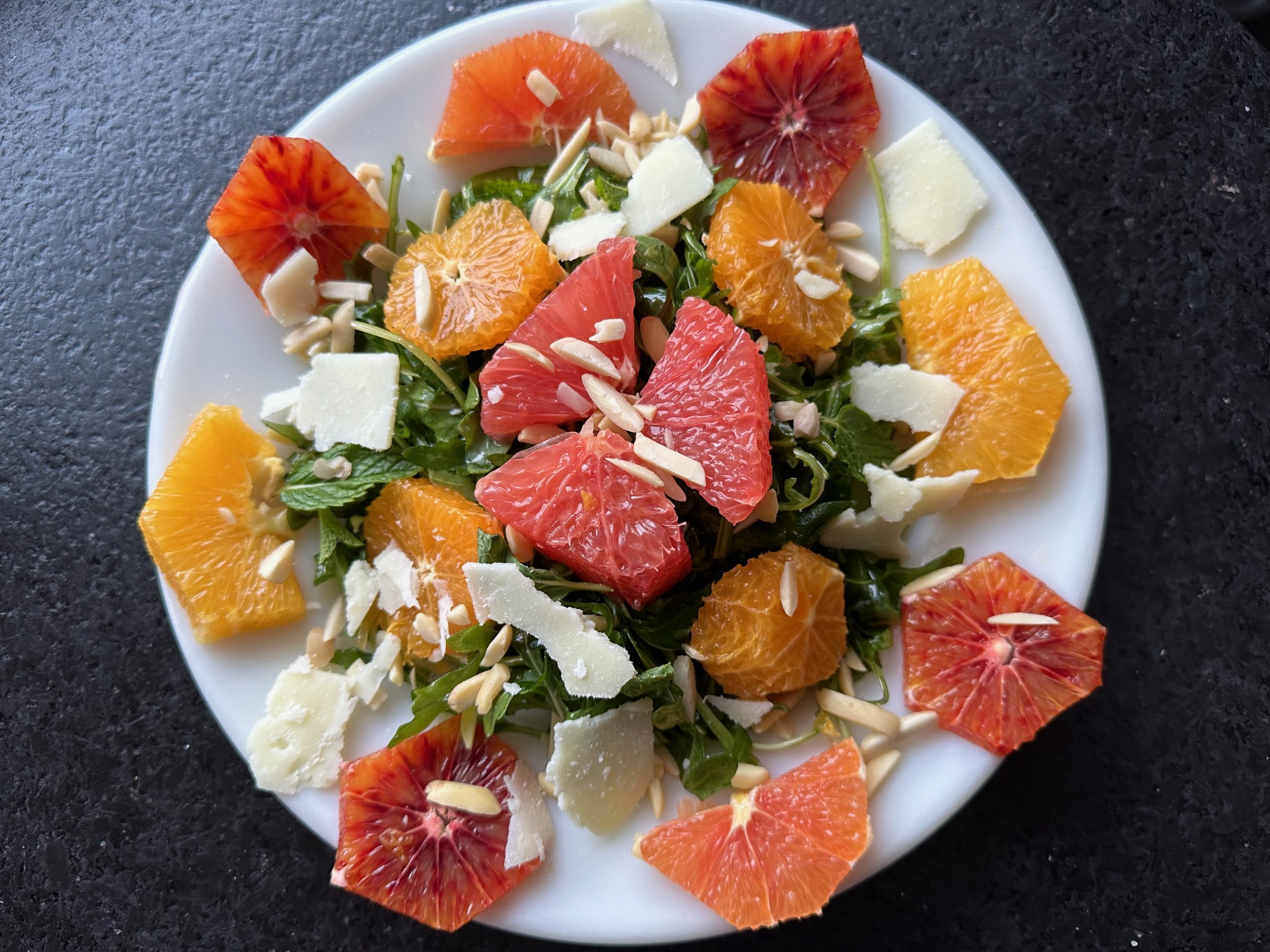Citrus Wintergreen Salad
This time of year, citrus season is in full swing, offering more than a half-rainbow’s worth of color, including the red, orange, yellow and green parts of the spectrum. If you live in the dark, frigid north, these glowing orbs and oblong spheroids can light up a room from a bowl on the table, so cheery they practically boost your vitamin D levels.
If you have spent time in the sun belt during these months, when citrus dangle from the bushy trees like Christmas ornaments, you know these fruits are good for more than juice, a snack, or a garnish.
They are useful ingredients in all sorts of ways, including in cooked dishes. You may not want to eat a cooked lemon quarter, but if you add some lemon quarters to a stew you’ll be rewarded with a more flavorful bowlful, as it donates its fragrant acidity to the mix.
One of the easiest ways to get into a citrus state of mind is to use lemon or lime, or even orange, in place of vinegar, in salad dressings, marinades, or any other context that calls for acid. And if you want the flavor without the acid, or the water content, use grated zest from the peel. Zest is often used in baked goods and mixed drinks, but can also be added wherever a hint of citrus would be appreciated, like a salad, a bowl of soup, or a side of vegetables. A little goes a long way. Depending on what’s cooking, the zest might be the most useful part of the fruit.
This time of year when tomatoes are out of season, I use peeled slabs of citrus in my winter salads. They pack a tart punch similar to a tomato, and a pile of multicolored slices of citrus looks similar to a heap of heirloom tomato rounds.
Here is a recipe for a winter salad of citrus and greens. Like any salad recipe, you don’t have to follow it exactly. Instead, consider it a framework. Winter greens like endive, radicchio and kale tend to have more personality than lettuce, which makes them a perfect contrast to the passionate citrus. My favorite green for this salad is baby arugula from the winter farmers market. Its spicy, mustardy zing is nicely balanced by the zesty citrus. I also like to include a gamey cheese like romano to balance the sweetness of the citrus, along with feisty bits of onion and garlic.
This salad performs like a team of rivals, with many competing flavors creating multiple subplots. For example, the way the arugula coincides with the spicy black pepper, onions and garlic, along with the occasional piece of bitter pith clinging to the fruit. This salty combination presents a dramatic contrast to the sweet, tart fruit. When you factor in the umami from the nuts and cheese, the salad delivers every known category of flavor.
Citrus Wintergreen Salad
Mix and match your favorite citrus, leaves, nuts and cheese. Here is my preferred formulation.
Serves 2
1 blood orange
1 cara cara orange
1 grapefruit
1 “normal” orange
2 tangelos or tangerines
4 cups baby arugula
¼ cup olive oil
¼ teaspoon salt
¼ teaspoon ground black pepper
1 clove of garlic, pressed or mashed
¼ of a large onion, minced
¼ cup grated Romano cheese
¼ cup slivered almonds
Juice of ½ lemon
Cut the top and bottom off of each piece of citrus and place them on a cutting board with the cut ends flat so they won’t roll. With a thin knife, slice off the skin of each fruit, following the curvature of the flesh. Then slice each piece into circles, and cut the slices of larger fruit in half or quarters to make them more bite-sized.
In a large bowl, toss the arugula with the olive oil, salt, pepper, onion and garlic. Divide the leaves and put each portion on a plate. Arrange the citrus artfully atop the leaves. Sprinkle the almonds and cheese on top, and squeeze a quarter lemon over each of the two servings.
